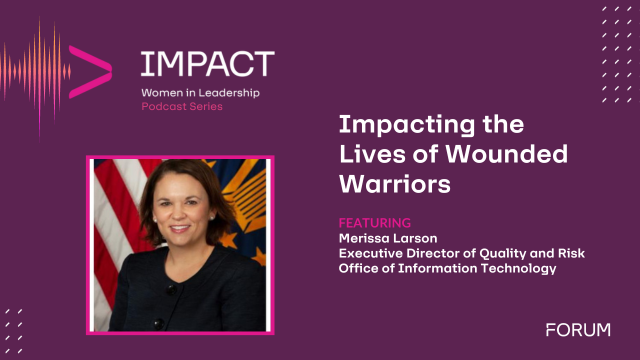By KippsDeSanto & Co.’s Marc Marlin
The Government contracting market is experiencing significant positive momentum, characterized by a relatively stable and visible budget outlook, ever-growing demands for IT transformation and modernization, and a continued reliance/partnership between the Government and contractors, amongst other favorable trends.
This market strength is further evidenced in the financial performance and healthy valuations of public contractors, as well as robust M&A activity. After a noticeable pickup in Government contracting M&A deal announcements in 2017, 2018 is trending towards another uptick. However, notwithstanding the news headline attention, mission criticality, and budgetary support, where have all the Federal Health IT (“Fed HIT”) deals gone? With strong anticipated Federal Health IT spending and addressable market opportunity, conditions seem ripe for a return of deal activity in the near term.
Federal Health IT has always been a somewhat niche market segment from a deal perspective, but one that is very visible and the darling of the Federal Civilian investment thesis. Over the past 18 months, we’ve only seen five M&A deal announcements that promote a Federal Health IT angle, in which the acquisition target identified with providing solutions to, or in support of, the payer, patient, or funding source of Healthcare (e.g., Veteran Affairs (“VA”), Centers for Medicare and Medicaid Services (“CMS”), Defense Health Agency (“DHA”), etc.). This represents a noticeable downturn from a peak of 11 announced transactions in 2012 and an average of 6.5 per year from 2013 through 2016. Why the dip? The answer is a combination of market success, disruption, priorities, and to some extent, contracting approach. However, these are also the ingredients for the huge growth opportunity and next wave of deal activity.
The GovCon HIT community has fallen victim to its own success. Contractor friendly initiatives around IT infrastructure investment and application development, and a focus on Civilian Agency priorities, ignited the M&A frenzy from 2008 through early 2016. Corporate growth was abundant, and growing health IT firms were rewarded with strong multiples from consolidation. Mid-market leaders such as 2020, QSSI, Truven, and ASM Research—amongst others—were folded into larger players, as either a Fed HIT platform or scale enhancement. Given the substantial deal activity, the Federal HIT middle market was simply “bought up”. However, this trend similarly opened the opportunity for the “new age” Fed HIT contractors of today that have grown up over the past few years, through the depths of sequestration and a change of administration and priorities, to emerge as innovators and change agents. We’ve seen these change agents across the bevy of contract awards, ranging from the CMS Agile Delivery to Execute Legislative Endeavors (“ADELE”) and “commercial-like disrupters” to the cadre of new entrants via Chief Information Officer-Solutions and Partners 3 (“CIO-SP3”) and Strategic Partners Acquisition Readiness Contract (“SPARC”). Some of the dip in deal activity can be simply chalked up to a lack of supply of HIT-focused contractors having the rare combination of scale, customer intimacy, and full and open (“F&O”) contract portfolios.
Disruption is another influencer of the recent M&A environment for Fed Health. The game has changed. Government customers at CMS, DHA, and the VA, amongst others, in many cases have prioritized innovation at the expense of tenured relationships and deep domain expertise. The willingness of customers to selectively embrace the unfamiliar contractor with fresh ideas, has broken the old playbook of “win, scale, recompete with moderate improvement, sell”. As innovation and new ideas were introduced, from artificial intelligence, big data science, and supercomputing, to virtual reality, and commercial NextGen platforms like Salesforce, ServiceNow, and Appian, the old mold for value creation was shattered. The customer thirst for disruption and innovation has further fragmented the contractor base, but in the same sense further heightened the competitive market dynamics for firms, ranging from the few person shop to the largest integrators, and also repopulated the new emerging middle market.
Notwithstanding on which side of the aisle one stands, priorities seemed to change on election night 2016. The Trump Administration ushered in a very public refocus on national security and defense spending. This is not to suggest that Fed Health is not a priority, but the perception of market strength and total addressable market shifted in balance toward Intel/Defense. Of note, since January 2017, approximately 73 percent of deal announcements have promoted a defense/intel element. The large purchase nature of acquisition in this market has seemed to motivate a doubling-down of investment in these market segments by the public integrators, with trickle down impact to the mid-market and smaller contractors who dual purpose as direct support to the Government and as niche providers to these larger private extensions of Government. As alluded to before, at times in the M&A and value creation markets, it’s as much about supply and demand and perception of opportunity as it is about inherent spending and funding fundamentals that remain strong in Fed Health. The pendulum always seems to swing back. A push towards IT modernization, and hopefully more $20M-$100M total contract value opportunities that are a lifeblood of the middle market HIT contractors, will only increase the supply of actionable acquisition targets.
The Fed IT space – to include Federal Health – is amid a technology revolution. Programs that introduce cloud migration, and the aforementioned commercial technology platforms that increase efficiency, reduce cost, and enhance user experience are just the tip of the iceberg of contractor-led initiatives expected to improve the delivery and quality and reduce the overall cost of Healthcare. This revolution is being driven by the cooperation of the contractor community, comprised of firms of all sizes. The mid-market is vibrant and building substantial past performance, a differentiated technical acumen and disruptive go to market strategy. So where have all the health deals gone? Just wait. Those firms who invest for the long-term, grounded in capability, technological innovation, and the right contracts vehicles, will be uniquely positioned to benefit from the next wave of Fed HIT consolidation.
About Marc Marlin
 Marc Marlin is a ManagingDirector at KippsDeSanto & Co., the largest investment bank exclusively focused on the aerospace/defense, and Government technology solutions sectors. Marc has a broad base of experience in providing transaction advisory services, with a particular focus on mergers and acquisitions for professional services and software companies. Past clients include NES, Edaptive Systems, Danya International, 2020, GlobalNet Services, 7Delta, Magellan Health, and General Dynamics, amongst others.
Marc Marlin is a ManagingDirector at KippsDeSanto & Co., the largest investment bank exclusively focused on the aerospace/defense, and Government technology solutions sectors. Marc has a broad base of experience in providing transaction advisory services, with a particular focus on mergers and acquisitions for professional services and software companies. Past clients include NES, Edaptive Systems, Danya International, 2020, GlobalNet Services, 7Delta, Magellan Health, and General Dynamics, amongst others.












